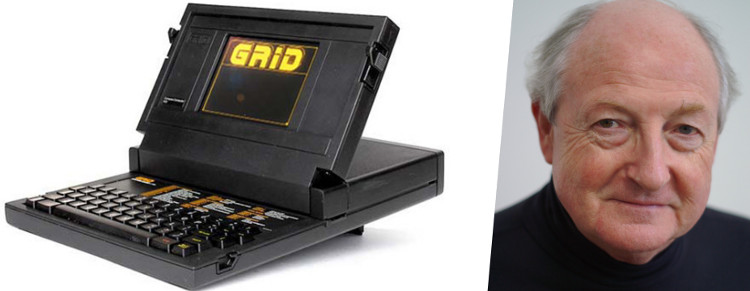The person who contributed to the first laptop computer died at age 75
Computer engineer John Ellenby, who had a great deal in the development and widespread commercialization of laptop computers, died at the age of 75. The information recently confirmed by his son Thomas and published on The New York Times. Ellenby's cause of death has not yet been determined and is only now known exactly that he died on August 17 in San Francisco.
In the 1980s, as the CEO of Grid Systems (founded by Ellenby), he, along with well-known British designer Bill Moggridge, developed The Compass - the first computer with a clamshell shape. with cam monitor EL technology folds. Sold in 1982, despite the extremely expensive price of $ 8150 ($ 20,325 currently), almost sold only to businesses or government agencies, The Compass is the beginning. for laptop computers era for all users.

John Ellenby computer engineer.
The Compass replaced the previous mobile computer, Osborne 1 or Kaypro, with a foldable design but as big as a suitcase and tiny screen. Previously, Ellenby also had certain effects in the development of computer technology in general.
John Ellenby was born on January 9, 1941 in Corbridge, northern England. After graduating in geography economics at the University of London, he spent the next six years continuing his studies at the London University of Economics, where he was exposed to mainframe computers. Later, he moved to work for British computer maker Ferranti, and taught computer science at Edinburgh University in Scotland. By the early 1970s, he moved to northern California to work for the Palo Alto Research Institute of Xerox Corporation.At the time, Xerox was designing a Alto computer and this was supposed to be the inspiration for the creation of the Apple Lisa and Macintosh, as well as Microsoft's Windows. At Xerox, people call Alto a "temporary Dynabook" to refer to a prototype of a mobile computer that will be developed later. At the research center, Ellenby was arranged to manage the Alto II development project, a version that was easier to produce than the original prototype. And also from here, he began to be named the master in technology transformation into products.
David Liddle, Xerox's chief executive at the time, remarked that "Ellenby is a great person, energetic and even daring". After leaving Xerox to found Grid in the 1979s, he created extremely popular products in businesses, government agencies and large US corporations. Weber, a computer historian, said the name of Ellen shows Ellenby's vision of a network of computers - the predecessor of the internet - that allows multiple computers to connect and share information.
And then in 1982, The Compass clamshell computer was officially marketed, quickly becoming the necessary equipment of government agencies and companies, including NASA or Bank of America. Initially the Compass required a lot of energy and needed to be plugged in, but it surpassed mobile computer competitors at that time with incredible compactness. In a comparison, the computer was also "mobile" at the time, Osborne 1, about the size of a suitcase. Meanwhile, the Compass can be neatly laid on a flat table and opened into a laptop.
By March 1988, Ellenby sold the Grid to Tandy Group. After that, he continued to set up Agilis to create portable tablet computers. Later, he and his son Thomas continued to set up GeoVector Group to develop navigation applications and enhance virtual reality. In the last years of her life, Ellenby continued to think about the major challenges in the development of laptops that have existed for more than half a century. In one interview, he once said that he wished to visit the White House. There he would meet an officer, who had met him before and said that he wanted a personal computer about half the size of a briefcase that Ellenby was carrying when she met that friend. And Ellenby once recalled: "This briefcase is, huh? It's hard."
- Father of laptop died of cancer
- Did you use your laptop properly?
- 6 ways of simple and effective laptop radiator without harming the machine
- How to handle when you dump water on your laptop
- Why is your laptop so good with ants?
- 10 ways to increase laptop battery life
- U1F laptop weighs 1kg
- Attention when buying a laptop
- The computer mouse father died at the age of 88
- Launched folded laptop super compact
- Laptop equipped with chip
- The first operating model of a laptop is 100 USD
 The most famous scientific failures in history
The most famous scientific failures in history Mysterious genius mechanic and the machine froze time
Mysterious genius mechanic and the machine froze time The son carries the 'bad gene' of genius Albert Einstein
The son carries the 'bad gene' of genius Albert Einstein Isaac Newton
Isaac Newton